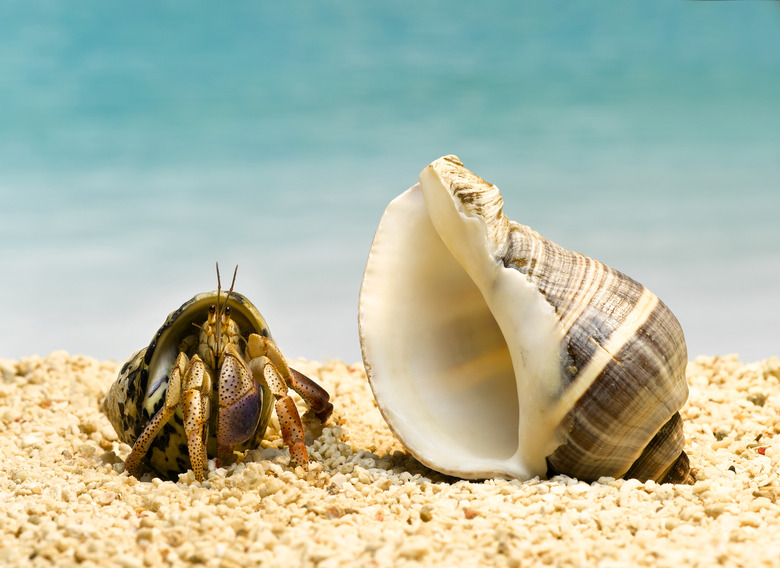How Does A Crab Adapt To Its Environment?
Widely regarded as a shining model for evolutionary adaptability by many biologists, crabs first appeared over 500 million years ago and are still going strong. These crustaceans possess complex nervous systems and use a combination of senses to hunt prey or hide from predators. Proving highly adaptable, different families or species of crabs flourish throughout the world in both freshwater and saltwater environments.
Burrowing Crabs
Burrowing Crabs
Burrowing is a survival adaptation that serves two purposes, both of which help the overall crab population. Crabs burrow into the sandy ground around them to avoid predators and create a safe place to lay their eggs. This adaptation not only helps to keep crabs safe from animals higher on the food chain, but also drastically increases the chances of the eggs hatching and gives young crabs some initial protection when they first emerge from the egg.
Most crabs periodically shed their hard shells or exoskeletons as they grow, spending a short time in a soft-shell phase until they grow a new shell. But hermit crabs sidestep this period by making use of shells left by other creatures, ditching their old shell and appropriating another as they grow. Sometimes they use non-shell items like bottle caps for protection and in one famous case, this cleverest of hermit crab adaptations even led one of the little critters to take up residence in a large Lego piece.
TL;DR (Too Long; Didn't Read)
A scientific study conducted on two species of hermit crab, scientific name Pagurus hirsutiusculus and Pagurus granosimanus, showed that the crabs actually develop a more refined taste for certain shell types as they age.
A Crab's Anatomy
A Crab's Anatomy
A crab's anatomy reveals several evolutionary advantages that help explain why this animal is so adaptable. Crabs sport five different pairs of legs, which allow quick movement through sand as well as the ability to move side to side just as quickly as forward and back. Crabs use their eyes to see both ultraviolet and visible light, allowing them to see equally well either day or night. A hard outer shell offers protection against predators, in addition to the crab's claws, which they use to hunt prey or fight off predators.
Developmental Stage
Developmental Stage
Crabs begin adapting to their environment even in the embryo and larval stages. In laboratory tests, species like the horseshoe crab show a startling ability to adjust to salinity levels in the water to make them specifically designed to thrive in that particular environment. This adaptive ability almost never shows up in the developmental stage of many species and provides crabs with a natural advantage in whatever environment they dwell in. All told, you'll find crabs thriving everywhere from fresh water to the depths of the ocean and land near the shore.
Localized Crab Adaptations for Survival
Localized Crab Adaptations for Survival
The crab family displays massive variation between species. For example, pea crabs measure a mere few millimeters wide, while the famous Japanese spider crab grows legs that can measure over 12 feet in length. Crabs are omnivores, which allows them to eat both local plant and animal life and proves a strong asset for each species to adapt to its own localized ecosystem.
Cite This Article
MLA
Dayton, Monty. "How Does A Crab Adapt To Its Environment?" sciencing.com, https://www.sciencing.com/crab-adapt-its-environment-10054455/. 24 September 2018.
APA
Dayton, Monty. (2018, September 24). How Does A Crab Adapt To Its Environment?. sciencing.com. Retrieved from https://www.sciencing.com/crab-adapt-its-environment-10054455/
Chicago
Dayton, Monty. How Does A Crab Adapt To Its Environment? last modified March 24, 2022. https://www.sciencing.com/crab-adapt-its-environment-10054455/
